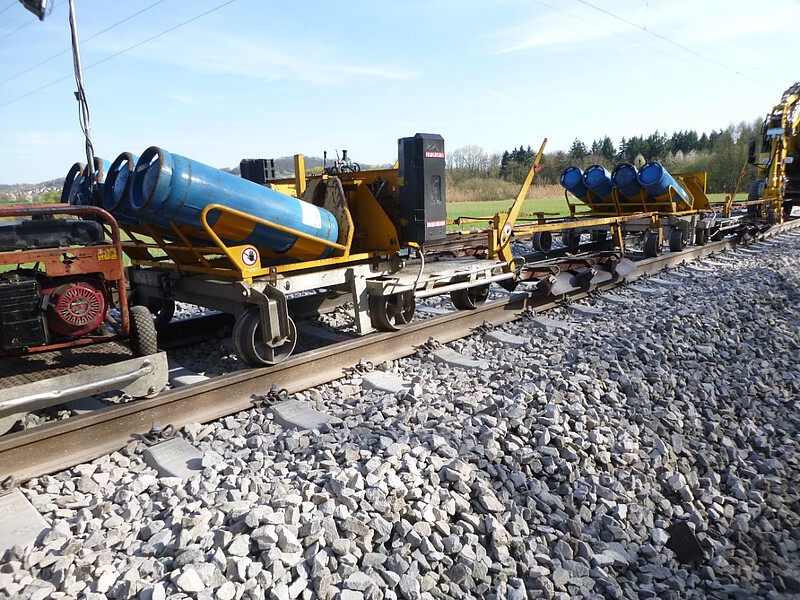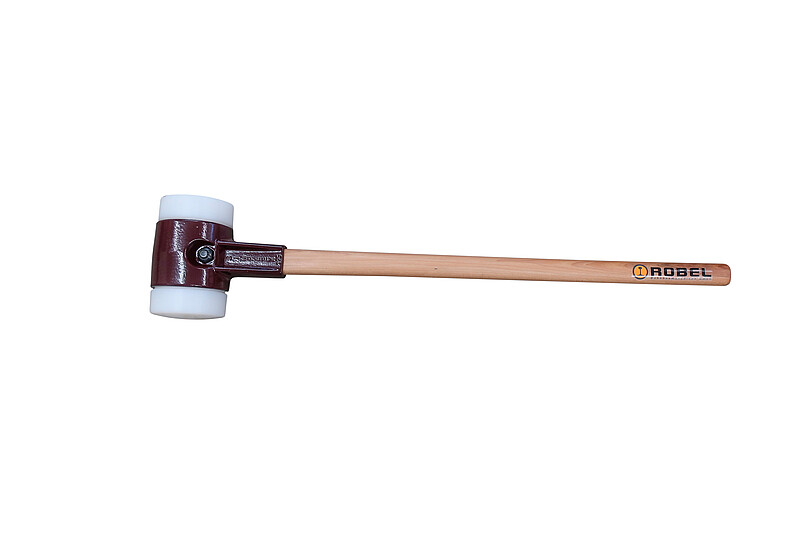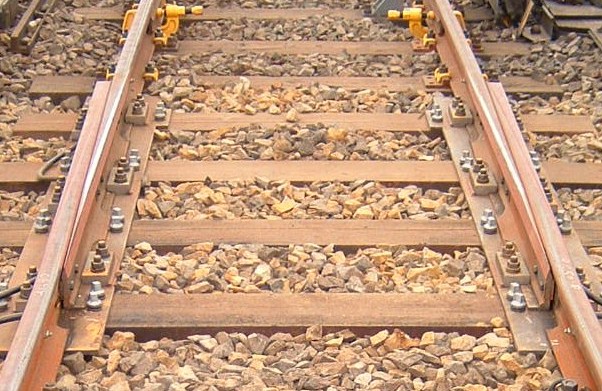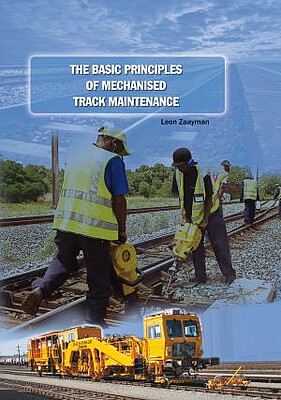Neutralisation
Railway tracks have been continuously welded for some time now, i.e. that means the tracks on the main lines and some secondary lines no longer have jointed tracks (with parallel positioned fish-plated joints). Thus, there was previously a clickety-click sound when travelling by train as every child knew.
On some secondary routes, connecting railways, harbour railways and park railways, there is still today some track with jointed gaps.
When rails are installed they are temporarily secured with fishplates or even welded. After a certain length of a section of line a final weld must be made, called neutralisation of the entire newly installed rail section.
The normal lengths of rolled rails (30 m, 60 m or 120 m), are all welded according to the specification and then after a certain length of the newly installed section of track there is a so-called closure weld. To make this, the already-welded rails are again released from the sleepers as the rail fastenings materials (W-, KS- or K-track) are undone. Thus, the rails again lie stress-free on the sleepers.
Now the initial temperature of the installed rails is measured with an adhesive thermometer stuck onto the rail. This is always applied on the shady side of the rail.
With this measurement it is possible to determine from a table by how many millimetres the rail must expand, so that it can take the compressive forces in summer and the tensile forces in winter. This change in length of the track is produced by warming. This change of length can also be determined by a formula, which includes the rail length, rail temperature, the thermal expansion coefficient of steel and temperature difference.
Formula: Δ l = l • ∝ • Δ t
- Δ l = Change of length.
- l = Length of rail in mm.
- ∝ Steel = Thermal expansion coefficient (expansion coefficient) of rail steel 0.0000115.
- Δ T = Change in temperature in degrees Celsius from the initial state.
By heating with so-called heat pipes, the rail is brought to or reaches the calculated change of length. However, in order to make the weld, a piece of rail must previously be cut out with acetylene and oxygen (if necessary, propane can be used), and at the same time, the welding surfaces roughened.
Consequently, the rail has now reached the neutralised temperature, so that in the different temperature zones there can be a change of the rail length due to the heat and cold. Neutralization or de-stressing usually takes place at night in summer, because the track then still has the desired temperature of the warm days and has cooled down a little due to the mild night and wind. The appropriate rail temperature is between 20 - 26°C. If the rails have not cooled to the desired temperature, it is necessary to wait for the cooler hours during the night. Save time and money for the heating with acetylene/oxygen or propane.
In order to achieve a uniform expansion of the rail, control points are set up. These are marked on the track at a distance apart of 60 m in tangent track and a maximum of up to 30 m in curves. The change of length must not be prevented by fixed rail fasteners, incorrectly positioned sleepers (angular position), upset bulges or wandering and earthing cables.
If a rail cannot be de-stressed by the release of the rail fastenings, it is possible to de-stress it by hitting it with a soft faced hammer. Recently, machines have been designed that do this job. After the desired elongation has been reached, the rail fastenings are again fastened down some distance from the weld.
The Senior Civil Engineer or his representative is responsible for the proper implementation and execution of the welding and neutralisation work and this must also be documented.
So-called expansion joints (dilation joints) are located in the railway superstructure on bridges, which can accept the displacement of the bridge in the track skeleton. Bridges also expand in summer and contract in winter, so they have a solid bridge bearing on one side and on the other side a rolling bearing that can expand and compensate for the length Change.
Today, high-speed lines have to be neutralised, otherwise such high speeds (up to 300 km/h) would not be possible with joint gaps. If a rail cannot withstand the stresses (temperatures), it changes shape. This is called buckling.
A lateral displacement of the track is a stress condition within the rail, due to very high warming without the effect of an external force. This is visible at a bulge of the track grid.
Track buckling occurs under the effect of an external force. In the case of track buckling, the track grid is lifted and thus the resistance to lateral displacement is reduced. It is possible to run over laterally distorted track at low speed, but it is not possible to run over track that is buckled.
In summer, due to high rail temperatures the rails expand in all directions, generally to the side, so that a standard gauge of 1435 mm can no longer be maintained.
In winter, however, the rails contract and break like glass, easily, quickly and in most cases rail breaks are not directly visible and recognizable. The almost invisible broken rails are usually detected by the signalling system, since this sends current through the rails.
You can find suitable specialist literature to the topic here:
The Basic Principles of Mechanised Track Maintenance
This book is dedicated to the many people involved in the day to day planning and performance of track maintenance activities. Providing a practical approach to everyday challenges in mechanised track maintenance, it is not just intended as a theoretical approach to the track system.
Railways aim at transporting people and freight safely, rapidly, regularly, comfortably and on time from one place to another. This book is directed to track infrastructure departments contributing to the above objective by ensuring the track infrastructure’s reliability, availability, maintainability and safety – denoted by the acronym RAMS. Regular, effective and affordable track maintenance enable RAMS to be achieved.




